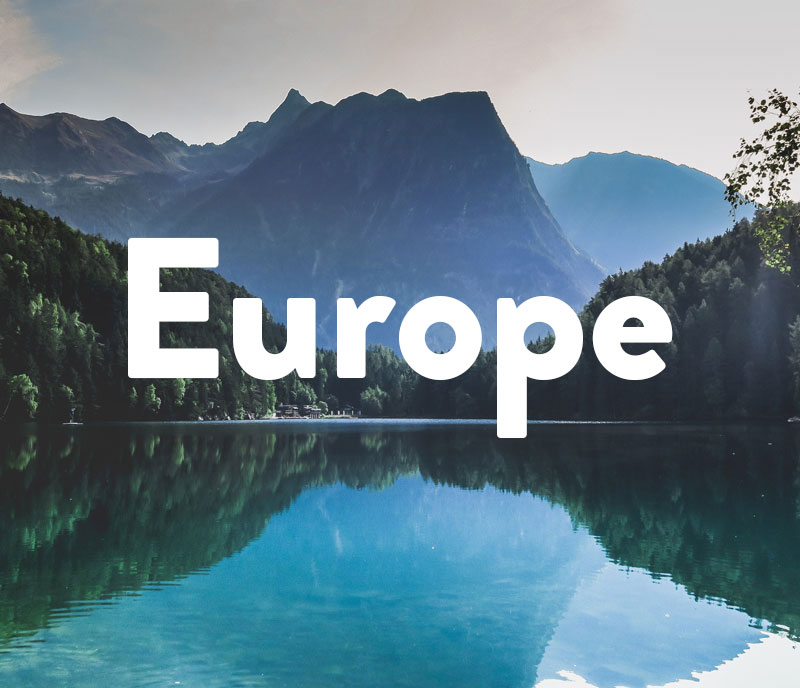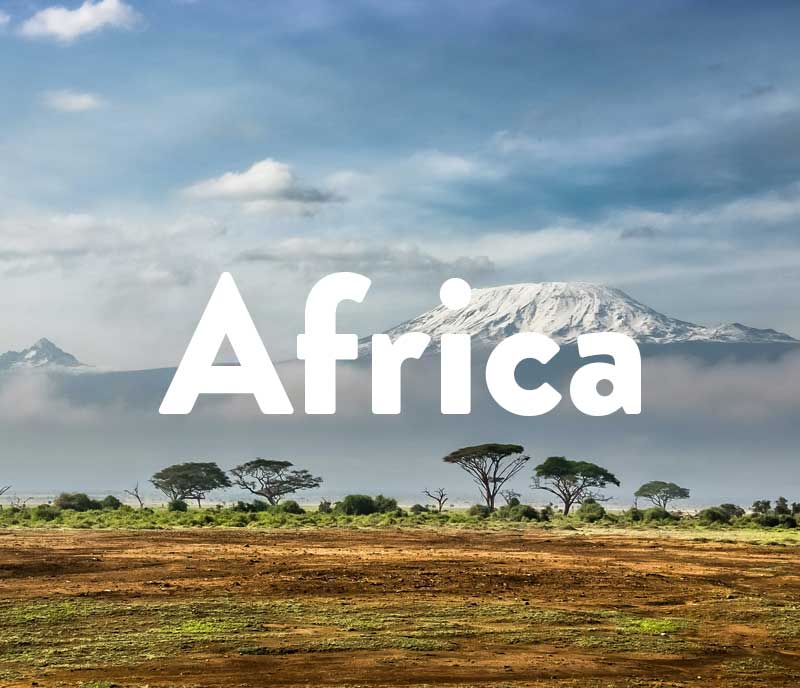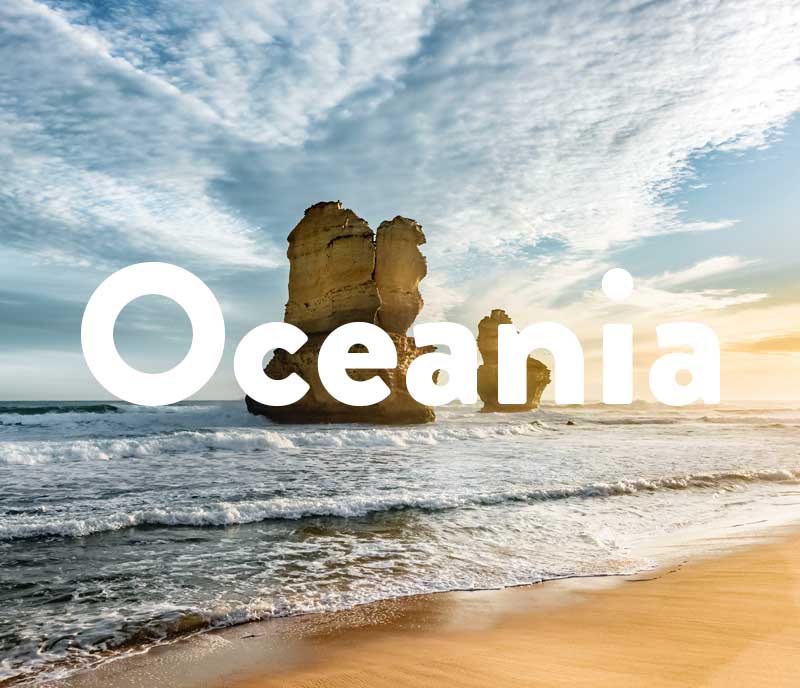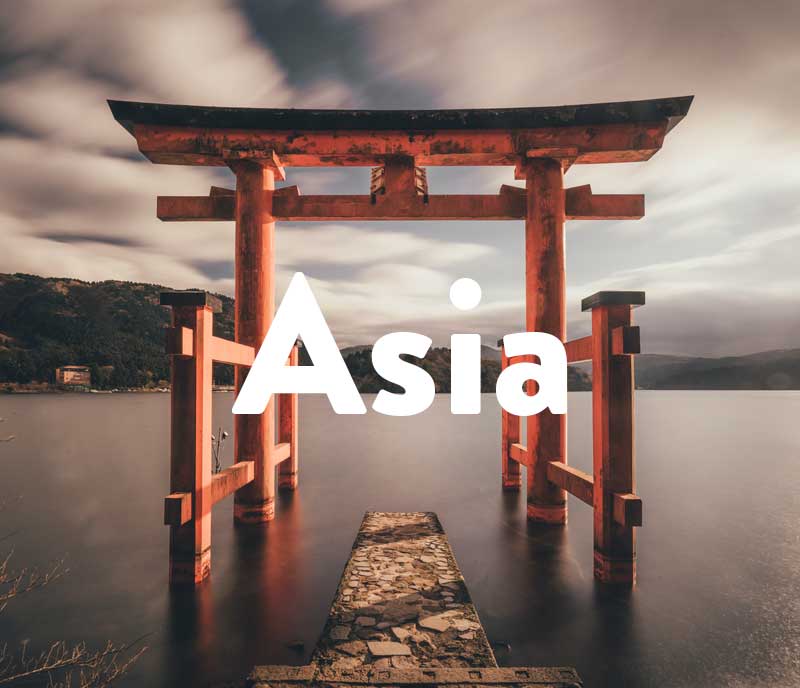Namibia offers an enticing mix of local, bustling culture and wide expanses of wild, beautiful nature. Travelers are spoilt for choice: A classic safari tour is a great option, but then… So is visiting the huge mountains that tower over canyons and desert. And then again, a city trip too, promises a unique experience – merging Namibian tradition with what has remained from its time as a German colony.
Dive into our (free) travel guides below!
.
.
.
.
.
.
.
.
Key Info
Nestled in between Angola and South Africa, Namibia is a wildlife-lover and nature photographer’s dream come true! With over 825 thousand km2 of vast wilderness to explore, the south African landscape comes in a variety of forms.
The central spine of the country is filled with rugged mountains and canyons providing a stunning backdrop for the surrounding desert. Elsewhere the open spaces of grass plains, rivers and wetlands may feel like a barren land at first, but amazing wildlife is lurking everywhere.
The central capital, Windhoek, is the place to visit for a taste of the country’s German heritage through its fantastic festivals, food and architecture. And if that isn’t enough, there is something for everyone on the west coastline. Here, huge sand dunes meet the ocean while shipwrecks, seal colonies and remote villages occupy the eerie Skeleton coast.
Country in Numbers
- Population number: 2,746,745
- Total size of the country: 825,615 km2
- Capital city: Windhoek
- Currency: Namibian Dollar (NAD) and South African Rand (ZAR)
- Language: English
- Religion: Christian 97%, Non-Christian/Atheist 3%
The Largest Cities in Namibia
1. Windhoek – Population 268,132
The capital and the largest city in Namibia, Windhoek has many German influences dating back to colonial rule. Gothic medieval-like architecture can be found across the city, such as in the busy Independence Avenue, which is adorned with German style facades and the iconic Christus Church – the oldest in the country. The city even holds its own ‘Oktoberfest’ festival, giving a taste of traditional German food, games and dancing.
For an educational and cultural adventure into Namibian life visit the National Museum of Namibia and the National Botanical Gardens along with the vibrant township of Katutura.
2. Rundu – Population 58,172
Situated in the north east on the border to Angola, Rundu is a growing economic centre once focussed on farming alone. Tourism has boomed in recent years as its relaxed atmosphere, unique activities and wooden crafts have made this remote city a destination in itself. You can watch the talented wood carvers at work making everything from sculptures to spoons and there are plenty of these fine items available to purchase too. T
he nearby riverbank is an ideal place to enjoy the flat landscape of the north with boat and hiking tours on offer. Don’t visit alone though as the Okavango river is inhabited by crocodiles and hippos!
3. Walvis Bay – Population 52,058
The busy harbour town of Walvis Bay (Whale Bay) is the perfect base to explore the towns huge natural lagoon and Sandwich Harbour. Say hello to the flock of Flamingos, tuck into a seafood extravaganza in the sea-view restaurants or go for a short nature walk around bird paradise. The bay’s vibrant maritime history can be explored in one of the multiple museums here. Many museums also display impressive archaeological finds from one of the most important coastal wetlands in Africa.
4. Oshakati – Population 33,618
The northern town of Oshakati is the capital of Oshana Province with a mismatch of businesses, shops and residential areas as well as a bustling open market, the largest in Namibia in fact. There may not be much more than this in the centre, but the location between two of Namibia’s best natural sights makes it a great stopover destination for visiting the stunning Etosha National Park and the wonder of Rucana Falls.
5. Swakopmund – Population 25,057
This popular seaside resort’s German roots can be found across the town in its historic buildings and European-style hospitality. Located directly west of the capital Windhoek, Swakopmund is easily accessible and you will be spoilt for choice in this most activity-rich area in Namibia. Aquarium and dolphin cruises will take you on an aquatic adventure. Next you can get your cultural fix from the many museums and art galleries. Then take a tour to the nearby Skeleton Coast for a fascinating but eerie experience!
Top Tourist Attractions
1. Sossusvlei & Deadvlei
Deep in the Namib Naukluft National Park, Sossusvlei contains some of the tallest sand dunes in the world, towering up to 325 metres from the ground. The striking bright red dunes surround the white clay pan of Deadvlei, an area that has been cut off from the river, leaving a collection of dead camelthorn trees that are frozen in time. This amazing contrast creates one of the most unique desert lands in the world and is a must visit.
2. Etosha National Park
If you are wanting an authentic African safari experience, then you can’t go wrong with Etosha National Park – one of Africa’s greatest game reserves. Over 100 mammals including the ‘big five’ inhabit the spectacular wildlife park that is dominated by the Kalahari Basin. When Heavy rain falls the basin is filled, providing a spectacular mirage. You don’t have to rely on the weather to spot wildlife though, as the natural water holes attract hundreds of animals every day.
3. Skeleton Coast
Dramatic dunes and endless desert meet the ferocious South Atlantic Ocean on western Namibia’s fascinating Skeleton Coast. The name comes from the amount of shipwrecks and whale bones found lying on the shore on occasions when unforgiving fog and landscape left many stranded. Though nowadays a more friendly sight of seal colonies inhabits the area at Cape Cross.
4. Walvis Bay
At Pelican Point, over 100,000 birds including Flamingos and Pelicans make the freshwater lagoon their home in the summer. After something a little more exciting? Then head down to the nearby Sandwich Harbour to climb some incredible dunes by foot or quad bike. You can even have a go at sand boarding!
5. Fish River Canyon
Located in south Namibia, Fish River Canyon is the second largest canyon in the world. The hiking trail is not for the faint hearted. The trek is only available from April to September as the heat is less intense then and takes around 4 to 5 days to complete! Isolation from the world and sunset views make it all worth it!
Best time to travel
Low humidity and rainfall along with over 300 days of sunshine a year means there isn’t a bad time to visit Namibia! The winter season from July to October has more comfortable daytime temperatures and spotting wildlife tends to be easier as animals gather in waterholes. Though do beware of cold nights in July and August as they can drop to freezing temperatures in remote areas.
Holidays in Namibia
- 1st January: New Year’s Day
- 21st March: Namibian Independence Day
- March / April (varies every year): Good Friday & Easter Monday
- 1st May: International Workers Day
- 4th May: Cassinga Day
- May (varies every year): Ascension Day
- 25th May: Africa Day
- 26th August: Heroes Day
- 10th December: Human Rights Day
- 25th December: Christmas Day
- 26th December: Family Day
Visa Requirements
Namibia has agreements in place giving visa-free entry to 55 countries including the UK, the USA, Australia and many European countries. This allows tourists to visit for up to 3 months. Many other countries not in this list can obtain a visa upon arrival, though do check your local embassy’s advice before travelling.
Currency
The Namibian Dollar is the country’s official currency, though the South African Rand is also widely used. These are both worth the same, so there is little advantage in using a specific currency.
ATM’s are available at all major banks and credit/debit cards are accepted in most hotels, shops, restaurants etc. though do check for additional fees with your bank.
Dos and Don’ts in Namibia
| Do | Don’t |
| Expect a vast isolated land: Namibia has the second lowest population density in the world. A lot of the country is empty of human life – perfect to escape city life, but may leave you isolated at times. | Assume it’s cheap: In cities and towns, there may be cheap options, though in the desert and at peak season prices are high. |
| Hire a 4×4: You need a tough vehicle to navigate Namibia’s varied terrain. | Get too close to animals: Keep safe and keep your distance. These are wild animals and they can be unpredictable. |
| Pack warm clothes for the winter months: Winter nights in Namibia are incredibly cold dropping to freezing temperatures sometimes so make sure you pack appropriately. | Take a short trip: As the sights are hours away from each other, you should take Namibia at a slow pace and spend a good few weeks here to really enjoy it. |
Must-Haves for Your Packing List!
- A comfortable backpack: The ground is often uneven, so a durable backpack is a lot easier than dragging a suitcase.
- Warm clothes: For cold nights if visiting in July, August and September.
- Power bank: To charge your phone or camera where there is no electricity.
- A great camera: To get those perfect wildlife shots.
- Insect repellent: Tol keep those unwanted mosquitoes and bugs away from you.
Secret Tips From Bloggers
Visit in the winter months (July to October) for stunning star lit night skies perfect for astrophotography! – The Blonde Abroad
Visit Etosha National Park last. The scenery in the park is so varied and beautiful that other places may have a hard time living up to it if you start your trip here. – Full Suitcase
Invest in a zoom lens for wildlife photos. No one wants to come back from an African safari trip with blurry photos of lions in the distance! A zoom lens is needed to capture them in action. – Never Ending Footsteps
Top 7 Instagrammable Places
- #Etosha (135k)
- #Sossusvlei (88.9k)
- #deadvlei (46.1k)
- #Fishrivecanyon (20.4k)
- #Spitzkoppe (18.9k)
- #Waterberg (15.8k)
- #Kolmanskop (12.6k)
Fun Facts about Namibia
- There’s a ghost town. Kolmanskop is a former diamond mining town and was one of the richest in Africa. Now the desert has reclaimed it and you can take a tour around the abandoned buildings.
- The Namib Desert is the world’s oldest; it is 80 million years old!
- Namibia used to be known as South West Africa before gaining independence from South Africa in 1990.
- The incredible Namibian landscape has been used as the set for giant blockbuster films such as Mad Max and Flight of the Phoenix.
Travel-addicted? This is for you…
- Winter city breaks 2024 — 10 wonderful destinations around the world
- Holiday at home — plan a relaxing autumn staycation
- Autumn photography — 10 tips for capturing seasonal snapshots
- Tips for your autumn trip — our autumn favourites
- City breaks in autumn 2024 — 8 unforgettable destinations across Europe







